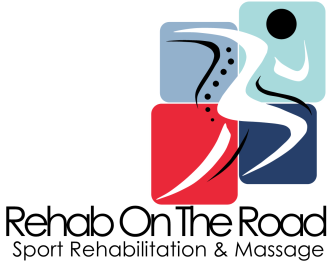This joint is formed by the end of the clavicle (collar bone) and the acromion (part of the shoulder blade). here are ligaments that keep this joint stable and a small disc between the ends of the bones which can degenerate by our fifth decade of life. Muscles including the deltoid and trapezius that attach to the clavicle also aid stability.
Symptoms
Ligament Injury:
- Pain & Limited motion in the shoulder
- Swelling & Bruising
- Tenderness at the top of the shoulder
- You may also be able to see that the collarbone is out of place or notice a bump on the shoulder
Osteoarthritis
Pain is often felt over the ACJ and it can be very painful lying on the arm at night. Activities that involve lifting the arms overhead, front crawl swimming and reaching across the body are often painful.
Anatomy

An injury to to the AC joint ligaments is a shoulder separation. These are graded 1-6; 1-3 are the most common, 4-6 are rare and involve damage to surrounding structures such as muscle and bone

Causes
Ligament Injuries
Separations of the AC Joint account for 40% of shoulder girdle injuries in athletes. Commonly, injury happens when falling onto an outstretched hand or elbow, direct blows to the shoulder, or falling onto the point of the shoulder
Arthritis /Osteoarthritis
This happens from gradual wear and tear. Over time, the outer cartilage of the joint is worn away. Playing a sport or having a job that involves repetative shoulder movements mainly overhead or across the body as high cause factors.
A previous shoulder separation, in which the ligaments that hold the bones of the acromioclavicular joint together were sprained or torn, increases the likelihood of developing acromioclavicular osteoarthritis.
Treatment
Depending on the severity of the injury, most patients with Grade I through Grade III injuries can be treated without surgical intervention. If your injury is minor, treatments may include icing, a protective sling, and pain and anti-inflammatory medications. You may also participate in a rehabilitation program to strengthen the shoulder and restore range of motion. The majority of patients will be pain-free and experience full range of motion within two to three months.
If you have not achieved full range of motion, and continue to experience pain after three months of non-operative treatments, you may be required to undergo a surgical procedure
Nonsurgical Treatments for AC Osteoarthritis
Activity modification: Exercise that requires cross-body arm movement should be avoided if they cause pain. Other daily activities may need to be avoided and alternatives identified.
In contrast to treatment for hip & knee osteoarthritis, which emphasizes physical therapy, experts have found physical therapy less effective for acromioclavicular arthritis.
However, depending on the patient, co-existing conditions, a exercise programme that focus on stretching and strengthening muscles and maintaining the shoulder’s range of motion may be helpful
Contact Me
Let's chat!
Need more information? Send me an email or drop me a line. I don’t bite!
- Charlotte@rehabontheroad.co.uk
- 07971448719
